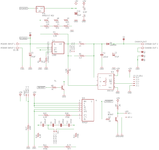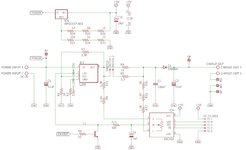Gigillo74
Member level 3
- Joined
- Aug 24, 2007
- Messages
- 61
- Helped
- 0
- Reputation
- 0
- Reaction score
- 1
- Trophy points
- 1,288
- Location
- Bologna - Italy
- Activity points
- 1,662
Hi all,
i've a problem to solve with maximum pot terminal voltage.
I need to work with +-8V to VH and VL terminal but max applied voltage is +-5V.
Someone have a solution to increase this max value using external components?
Thank You.
Luigi
i've a problem to solve with maximum pot terminal voltage.
I need to work with +-8V to VH and VL terminal but max applied voltage is +-5V.
Someone have a solution to increase this max value using external components?
Thank You.
Luigi

